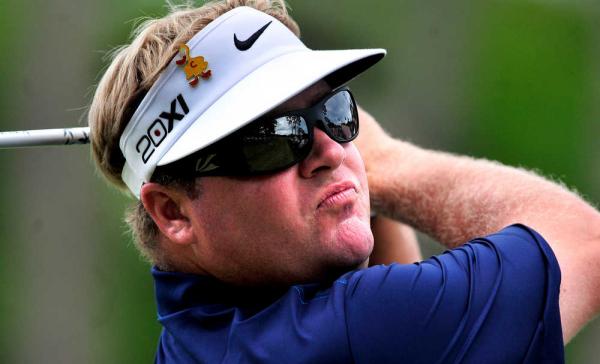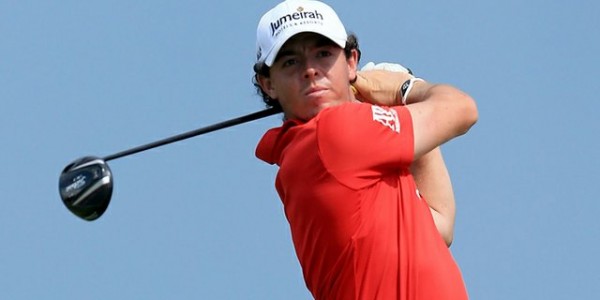USGA and R&A Propose Anchored Stroke Ban
http://www.pgatour.com/2012/r/11/28/long-putter.ap/index.html
![[image] [image]](http://i2.cdn.turner.com/pgatour/2012/r/11/28/usga-explanation-graphic/anchor-graphic.jpg)
As expected, the USGA and R&A are proposing to ban the anchored putting stroke starting in 2016. My thinking is that this will be met with little resistance because they only banned the stroke and not the equipment. Had they banned the longer putter, the OEM’s could have joined in a lawsuit and proclaimed that the USGA and R&A have hurt their business that they initially approved and are now banning. But, since they are banning the stroke there is no tangible financial loss by a person or a company and a lawsuit would be less likely.
I do play with a belly putter that I anchor against my stomach. However, I have only recently started using it and I am unafraid to go back to a standard style of putting stroke that I have used since I was 11 years old.
However, I think the proposed ban is a silly overreaction to what is more or less a fad. And once again, the USGA and R&A have listened to popular golfers in the game instead of seeking facts in order to avoid major holes in their arguments. More importantly, they have neglected the amateur golfer AGAIN, the people that drive and fund the game and the respective golf rules associations.
I take no issue with banning a method or a piece of equipment, but there should be a process in place to eradicate situations like this from happening. The long putter has been around for 20 years. The belly putter became popular around 2001 and burned out as a fad shortly after. It was not until Keegan Bradley won with the belly putter and Adam Scott putted better with the long putter that the powers that be got up in arms.
Yes, TWENTY years the long putter was used without any real issue. Nobody was going to a long putter because they wanted to. And Adam Scott’s ‘improved’ putting has netted him 143rd in Putts Gained in 2011 and 148th in 2012. What was Scott’s best year with the putter? 2004, when he ranked 1st in Putts Gained with a standard Scotty Cameron putter.
I have no problem is the R&A and USGA ban a piece of equipment or a technique because it provides an ‘unfair advantage’ that has the golfer relying less on skill. But whether they like it or not, the best thing for golf is for the USGA and R&A to show some evidence to the golfing public behind their reasoning. Otherwise it’s just another irrational dictatorship that leaves the customers jaded.
Just like when the grooves rule came out and how that was supposed to force golfers to focus on finding the fairway more often and make it more difficult on shots around the green. Except that all of those key metrics have never changed. Tour players are still favoring distance over accuracy and can still get up-and-down the same rate as they ever could. And they can still generate spin on the wedges by using higher spin producing shafts.
The main contradiction lies with the banning of the stroke because it provides and advantage and requires ‘less skill’, but this is never mentioned when it comes to the modern day titanium driver. In 1980, the longest driver on Tour was Dan Pohl at 274.3 yards. In 2012, Bubba Watson led the Tour in driving distance of 315.5 yards. That’s a 15% increase in distance! Think about it for a second. I hit my driver about 290 yards on a good strike. If I had a driver that gave me automatically 40-45 yards more distance THAT would be a giant advantage. And not due to my skill either.
Furthermore, the increase in length off the tee has made many excellent golf courses obsolete. These golf courses have no more room to lengthen the course or the lengthening drastically changes the original designer’s intent. It’s also led to what I call ‘Forced Carry Designs’ which are pretty in nature, but lead to slow rounds of golf as golfers find themselves hitting into hazards and having to look for golf balls. And the #1 reason why more people play less golf these days? Not enough time due to the slow play.
The USGA and R&A cannot be taken seriously when they claim that they are interested in protecting the game when they allow the modern driver to still exist. They are more interested in protecting their authority in the game while avoiding legal and financial turmoil. I can actually accept that, but at least be forthcoming about it.
Of course, many golfers would not be frustrated if the USGA and R&A would stop legalizing things like the anchored putting stroke only to change their mind decades later. It is what got them into trouble with PING in the 80’s, the reason why they could never attempt to ban the titanium driver, the reason why their attempts to curb the distance golf balls travel became a joke, the reason why they had to change the grooves rule in order to benefit the OEM’s while screwing over the golfers and why we are where we are today.
3JACK
http://www.pgatour.com/2012/r/11/28/long-putter.ap/index.html
![[image] [image]](http://i2.cdn.turner.com/pgatour/2012/r/11/28/usga-explanation-graphic/anchor-graphic.jpg)
As expected, the USGA and R&A are proposing to ban the anchored putting stroke starting in 2016. My thinking is that this will be met with little resistance because they only banned the stroke and not the equipment. Had they banned the longer putter, the OEM’s could have joined in a lawsuit and proclaimed that the USGA and R&A have hurt their business that they initially approved and are now banning. But, since they are banning the stroke there is no tangible financial loss by a person or a company and a lawsuit would be less likely.
I do play with a belly putter that I anchor against my stomach. However, I have only recently started using it and I am unafraid to go back to a standard style of putting stroke that I have used since I was 11 years old.
However, I think the proposed ban is a silly overreaction to what is more or less a fad. And once again, the USGA and R&A have listened to popular golfers in the game instead of seeking facts in order to avoid major holes in their arguments. More importantly, they have neglected the amateur golfer AGAIN, the people that drive and fund the game and the respective golf rules associations.
I take no issue with banning a method or a piece of equipment, but there should be a process in place to eradicate situations like this from happening. The long putter has been around for 20 years. The belly putter became popular around 2001 and burned out as a fad shortly after. It was not until Keegan Bradley won with the belly putter and Adam Scott putted better with the long putter that the powers that be got up in arms.
Yes, TWENTY years the long putter was used without any real issue. Nobody was going to a long putter because they wanted to. And Adam Scott’s ‘improved’ putting has netted him 143rd in Putts Gained in 2011 and 148th in 2012. What was Scott’s best year with the putter? 2004, when he ranked 1st in Putts Gained with a standard Scotty Cameron putter.
I have no problem is the R&A and USGA ban a piece of equipment or a technique because it provides an ‘unfair advantage’ that has the golfer relying less on skill. But whether they like it or not, the best thing for golf is for the USGA and R&A to show some evidence to the golfing public behind their reasoning. Otherwise it’s just another irrational dictatorship that leaves the customers jaded.
Just like when the grooves rule came out and how that was supposed to force golfers to focus on finding the fairway more often and make it more difficult on shots around the green. Except that all of those key metrics have never changed. Tour players are still favoring distance over accuracy and can still get up-and-down the same rate as they ever could. And they can still generate spin on the wedges by using higher spin producing shafts.
The main contradiction lies with the banning of the stroke because it provides and advantage and requires ‘less skill’, but this is never mentioned when it comes to the modern day titanium driver. In 1980, the longest driver on Tour was Dan Pohl at 274.3 yards. In 2012, Bubba Watson led the Tour in driving distance of 315.5 yards. That’s a 15% increase in distance! Think about it for a second. I hit my driver about 290 yards on a good strike. If I had a driver that gave me automatically 40-45 yards more distance THAT would be a giant advantage. And not due to my skill either.
Furthermore, the increase in length off the tee has made many excellent golf courses obsolete. These golf courses have no more room to lengthen the course or the lengthening drastically changes the original designer’s intent. It’s also led to what I call ‘Forced Carry Designs’ which are pretty in nature, but lead to slow rounds of golf as golfers find themselves hitting into hazards and having to look for golf balls. And the #1 reason why more people play less golf these days? Not enough time due to the slow play.
The USGA and R&A cannot be taken seriously when they claim that they are interested in protecting the game when they allow the modern driver to still exist. They are more interested in protecting their authority in the game while avoiding legal and financial turmoil. I can actually accept that, but at least be forthcoming about it.
Of course, many golfers would not be frustrated if the USGA and R&A would stop legalizing things like the anchored putting stroke only to change their mind decades later. It is what got them into trouble with PING in the 80’s, the reason why they could never attempt to ban the titanium driver, the reason why their attempts to curb the distance golf balls travel became a joke, the reason why they had to change the grooves rule in order to benefit the OEM’s while screwing over the golfers and why we are where we are today.
3JACK

